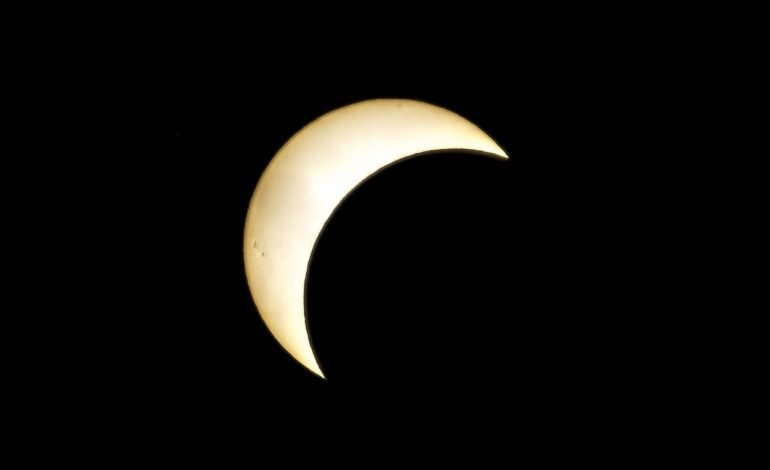A Partial Solar Eclipse is Expected this Weekend
Discover the map of the March 2025 partial solar eclipse: where and when to see it in the Northern Hemisphere, with schedules and tips.

Image by Pixabay
The partial solar eclipse will occur on Saturday, March 29.
A partial solar eclipse occurs when the Moon passes between the Earth and the Sun, blocking only part of it and casting a shadow over specific regions of the planet.
According to the POTDuring this event, the Sun will take on a crescent shape in the affected areas. While it won't be as impressive as the 2024 total eclipse, it's still a special opportunity for astronomy enthusiasts, provided proper eye protection is worn.
Where and when will the partial solar eclipse be visible?
The March partial solar eclipse will be visible in several parts of the Northern Hemisphere, including parts of North America, Europe, Africa, northern Asia, small areas of South America, as well as Greenland and Iceland. NASA has released a map detailing the areas under the lunar shadow, with yellow lines indicating the percentage of solar coverage and green lines marking the moment of maximum intensity at each location.
In the United States, those who wish to witness the phenomenon should get up early, as the eclipse will begin at dawn. For example:
- Portland, Maine: The sun will rise at 6:27 am EST, reaching maximum coverage of 64% at 6:30 am and ending at 7:10 am
- Boston: Sunrise at 6:31 am EST, with a peak of 43% at 6:38 am, ending at 7:07 am
- New York: The Sun will rise at 6:44 am EST, peak at 22% at 6:46 am and set at 7:04 am
In other regions, such as Europe and Northwest Africa, the event will occur between morning and midday, while in Eastern Europe and Northern Asia it will be visible in the afternoon or evening.
Tips for safely observing the eclipse
It is essential to protect your eyes when observing the partial solar eclipse. NASA warns that looking directly at the Sun without special eclipse glasses can cause serious damageOrdinary sunglasses aren't enough. Furthermore, using cameras, telescopes, or binoculars without proper solar filters, even with eclipse glasses, poses a significant risk. Make sure you have the proper equipment to enjoy the event without complications.
Featured schedules in other U.S. cities
In addition to the cities mentioned above, the eclipse will have varying levels of coverage in other locations:
- Buffalo, New York: Maximum 2% at 7:05 am EST, after sunrise at 7:02 am
- Washington, DC: Only a 1% maximum coverage at 6:59 am EST, with the Sun rising at 6:56 am
- Philadelphia: Maximum 12% at 6:51 am EST, after sunrise at 6:31 am
The partial solar eclipse of March 2025 is an opportunity to marvel at the cosmic dance between the Moon and the Sun. Stay informed with More Latin for more news.
Fountain: CBS News
